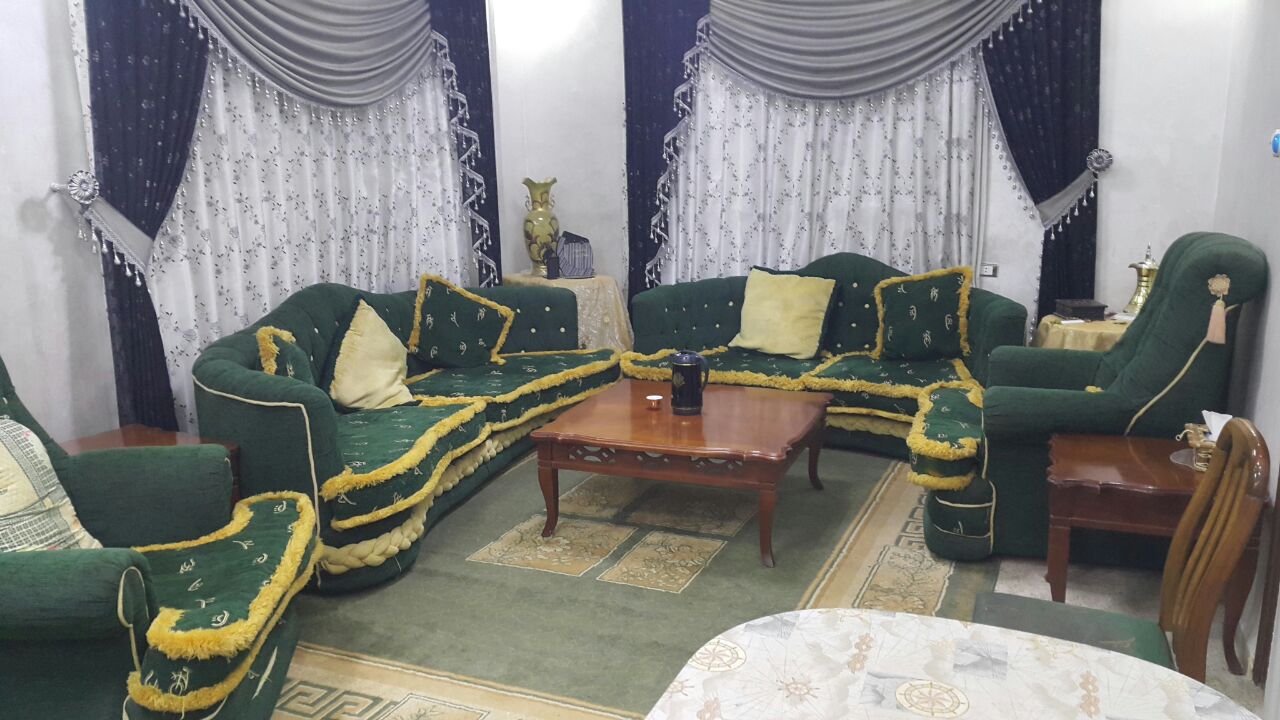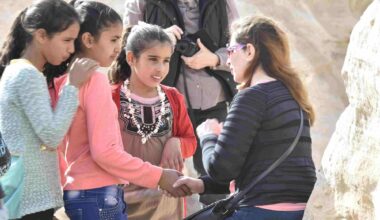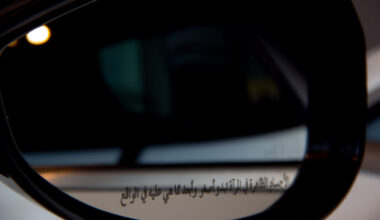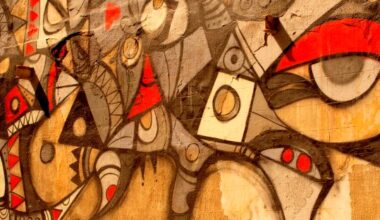by Ann-Christin Wagner.

“If you want a Pepsi, go get it yourself!”
A request that in a Western context would easily be understood as rude might mark the peak of hospitality in a Jordanian household. In fact, while receiving strangers in the Arab world presupposes a strict spatial division between the public and the private sphere, being invited to venture into places reserved to family members – such as the kitchen – marks a transition from being a guest to becoming family.
In early 2016, I started living with a Jordanian Bedouin family in Mafraq, a mid-sized town in the north of Jordan, in the proximity of Zaatari camp. While not sleeping at their house, I visit the family daily for long hours. Over the duration of eight months, I got immersed into their everyday life, dreams and sorrows, and my status gradually shifted from being a stranger to becoming a daughter, a passage not without its pitfalls and detours.
In previous research, much attention has been paid to the ritualised character of Arab hospitality. In my experience, rituals are often linked to enactments of Jordanian Bedouin identity, through the serving of Mansaf, an emblematic dish containing lamb, rice and yoghurt sauce, Bedouin coffee rituals, dialect and songs. In particular, evoking tribal lineages and affiliated places serves to maintain a distinct sense of Bedouin-ness. Here, I shift the focus from rituals to spaces of hospitality, taking as an ethnographic case study my own experience in Jordan.
During initial visit to various Mafraq-based families, both Jordanian and Syrian, I was often flattered by formula of politeness such as: “We are your family” or “These are your brothers”. However, I soon discovered the ritualised nature of verbal forms of inclusion; in fact, relationships with strangers are often framed in family terms. Furthermore, in a cultural context where families, not individuals, are seen as the core social unit, my own status as an unaccompanied young woman certainly fuelled rhetorics of adoption.
What hosts do (rather than what hosts say) – spatial and bodily practices and the negotiation of spatial boundaries – indicate degrees to which “guests” become “family” and strangers are incorporated into economies of intimacy. Yet, much more is at stake than household membership. On the contrary, the study of hospitality is turned into a prism through which boundaries between the public and the private, the family and outsiders, different genders, Arabs and foreigners come into focus. Drawing on Barth’s seminal anthropological approach to the interdependency of ethnic groups, I understand these boundaries not as separation walls, but rather as zones of frequent contact and exchange between groups. As a consequence, the question arises how distinct identities are maintained through relational processes of inclusion and exclusion along the domestic-foreign frontier. My own ethnographic experience of Jordanian hospitality serves to demonstrate that growing into a daughter is not a one-way street and that one can move beyond the “guest” status without ever fully becoming “one of theirs”.
In the tradition of Shryock’s work with the Balga Bedouins in Jordan, I also draw attention to the power structures inherent to Jordanian hospitality. These might play out in different ways; yet, they often translate into spatial inequalities. Doors might be shut, spaces both inside and outside the house get out of reach and guests’ mobility contained, to the extent that guests turn into “noble prisoners”.
Nested homes – boundaries of public and private within the Jordanian household
In a provincial society marked by a strong distinction between public and private spheres and the protection of the latter by means of high walls, barred windows, and thick curtains, I came to realize that barriers to intimacy do not stop at the front door. Contrary to Western understandings of the “home” as the prime territory of family life, spatial divisions between public and private run through the very heart of the Jordanian household, turning part of the house into a semi-public space.
Importantly, spatial frontiers in the home are linked to practices of hospitality; this becomes most apparent in the co-existence of two living rooms, the formal “maḍāfa” and the informal “ghurfa al-julus” (or “ghurfa al-qā’da”).
The maḍāfa is sumptuously furnished with plush armchairs and canapés, voluminous curtains, vases and intricately decorated ceilings; it serves as a stage for receiving guests from outside the family. In a deeply relational society organised along tribal lineage, splendid performances of hospitality are a way for maintaining and increasing social status. Preoccupation with reputation is furthered by the fact that Mafraq has only recently been urbanised. Despite the availability of city comforts, many Jordanian inhabitants remain deeply attached to rural lifestyles and agricultural lands outside town. More significantly, urban anonymity has not impregnated societal life yet; on the contrary, extended families tend to live in the same neighbourhood. For example, my host family shares a house with the family of one of my host father’s brothers; another paternal uncle as well as the maternal grand-parents live down the street and mutual visits occur on a daily basis.
In contrast to the maḍāfa, the family’s private living room is much more sparsely equipped with mattresses, the most expensive piece of furniture being the flat-screen TV. This is the actual locus of family life, where meals are consumed, stories are shared and leisure time is spent. Other than to the immediate family, it is open to close relatives.
Although both rooms are located next to each other, their spatial disconnect is striking. The maḍāfa and the rest of the household have separate entry doors, and a bell allows guests and hosts in the “maḍāfa” to communicate with the kitchen without having to enter the family section.

Choose the right door – crossing into Jordanian family life
Although boundaries of intimacy translate into actual household architecture, they are far from impermeable.
During my first visit to the family home I was received in the formal maḍāfa. Through a former Arabic teacher, I had established contact with the family’s eldest son and asked for help with finding my own accommodation in Mafraq, a town I barely knew. For three hours, parents and children questioned me about my research and life, to which I tried to answer in halting Arabic. At the end of a seemingly endless interrogation, the head of the household – who soon would become my host father and one of the most important guides to Jordanian life in the province – extended an unusual invitation. As the family had only sons, I was to become their first daughter. At the time, I took this for mere rhetoric.
Two separate entry doors leading to the maḍāfa (right) and the family section (left)
However, the next time I came by, the setting had changed dramatically. From now on, I was invited to join the family for meals and to spend time in the ghurfa al-julus. After moving to Mafraq some weeks later, I began to visit the family home every evening, and leave at night. Soon I was allowed to enter the family section without waiting for permission, as only close relatives do. However, it took another six months until my host mother asked me to serve myself from the fridge.
What is more, different spaces within the household translate into specific bodily practices. Guests received in the maḍāfa sit rather stiffly on couches and armchairs; in the private living room, family members relax and stretch out on mattresses on the floor. To the family’s amusement, I initially struggled with the unfamiliar position; I was encouraged to stretch out my legs freely. In contrast to that, while squirming uncomfortably during a formal dinner at the maternal grandmother’s house, I was brought a towel to cover my legs. Moreover, in the ghurfa al-julus, family members might occupy themselves with their smartphones or even nap in my presence, a behaviour considered impolite in front of guests.
The most striking indicator of gradual inclusion into family life, though, was the suspension of gender segregation. In fact, the latter is a major marker of the boundaries between family and public life, and closely associated with dynamics of gendered visibility. While female family members gather in the family section unveiled and mix freely with close male relatives, they are protected from the view of male guests in the maḍāfa. In a conservative semi-urban society such as Mafraq, encounters between the sexes are highly regulated. If contact between male guests and women of the family cannot be avoided, women cover their heads before entering the formal living room, thus abandoning the privacy of their home without ever leaving the house. Still, in the absence of my host parents, I would soon be allowed to stay in the family section with my host brothers – an almost unheard-of sign of confidence and family affiliation.
This said, inclusion is not limited to the intimacy of the home. After Ramadan, I attended a host brother’s graduation ceremony in a nearby university town. Cheering next to my host parents in a sports stadium filled with thousands of excited relatives of graduates revealed my status as a family member in the public eye. Hence, while becoming “family” is associated with gaining access to private spaces and practices hidden from view, it might eventually entail a return to the public.
Yet, becoming “one of theirs” not only comes with inclusionary, but also exclusionary practices. Like local women, I accepted restrictions on movement after sunset, spending evenings with my host mother instead. Moreover, encouraged by my host parents, I started to dress more conservatively in public; from merely covering my hair with a hat I proceeded to wearing a hijab and, occasionally, an abaya.
Thus, limiting personal mobility and rendering parts of my body invisible in the public realm reaffirm boundaries set by my hosts; a fine indicator of how power inequalities inherent to hospitality go on to structure the guest’s spatial practices even outside the home. A final ethnographic vignette illustrates an incident where host sovereignty is exerted.

In front of closed doors – Collapses of hospitality
Imagine my surprise when, two months after my arrival, one of my host brothers greeted me on the staircase, but led me through the maḍāfa door into the guest section. As he explained to me, the family was having a party in the ghurfa al-julus to celebrate the purchase of a new car. For this occasion, they had invited close family members and brought a huge plate of knafeh, a sticky sweet served during festivities. Kept out of view in the guest room, I felt confused and excluded. As my hurt feelings certainly showed on my face, my host mother and brothers came to the maḍāfa to keep me company and bring me sweets, further emphasising the absurdity of the spatial separation. As soon as the relatives left, I was introduced to the family living room and fed the leftovers of the knafeh party. At future occasions, I would always sit with family members in the ghurfa al-julus, in plain view of visiting relatives.
Not only does this incident illustrate the power divide implicit in guest-host relationships. What is more, practices of hospitality come with ambiguous visibilities. While unveiled females in the family section should be protected from the glance of strangers, here exclusion operates in the reverse direction: Rendering meinvisible to family members inside the intimate zone becomes a way of obscuring my existence, shedding light on the unusual and somewhat transgressive nature of our hospitality “arrangement”.
Most importantly though, transitioning from guest status to family member reveals itself to be not a continuous process but rather a back-and-forth, a tiptoeing across boundaries of space and intimacy.
In fact, frontiers of family life do not simply disappear, but rather are touched upon, sometimes crossed, but also reaffirmed. Despite unlimited access to the entirety of the family home, frequent exclamations of “Ahlan wa Sahlan” would alert me to the fact that I was not quite a daughter yet, but still a beloved guest. More importantly, while enjoying all the privileges of a household member, I would rarely be assigned any duties and, in the absence of more senior guests, be served first, instead of taking part in the serving as an actual daughter would.
Conclusion
My fascination with hospitality comes from its double nature both as a methodological precondition to and the object of anthropological inquiry. While I initially came to Mafraq to study Syrian refugees’ spatial and socioeconomic mobilities in an urban context, I quickly discovered that both are closely linked to displays of hospitality, which also take up a major portion of people’s time and resources. Thus, hospitality makes for an ideal study field to investigate Jordanians’ and Syrians’ movements, habits of home-making and relations within and between the host and the refugee community.
However, being received as a guest is also what has enabled my fieldwork in the first place. In a society still largely tribal, gender-segregated and devoid of public meeting spaces, entering Jordanian and Syrian homes and – in some cases – transitioning from “stranger” to close friend or family member has allowed me to conduct interviews and observe informants’ movements in situ, both on the microscale of the home and when accompanying them on visits.
It is this double nature of hospitality that in recent years has turned it into the object of interdisciplinary research in the humanities and the social sciences and revived its status as a foundational concept in anthropology. In the footsteps of Pitt-Rivers and Derrida, the tension between unconstrained hospitality and host sovereignty has been brought to the fore. That hospitality may combine inclusionary discourses and exclusionary practices becomes apparent in the Jordanian home, but even more so in the reception of strangers at the level of the nation-state, as during the current influx of Syrians. Denied refugee status, they have been welcomed as “guests” under schemes of Pan-Arab hospitality, but excluded from formal income opportunities, citizenship and affordable tertiary education. On a final note, given that more than 80% of Syrian refugees in Jordan are currently settled in urban contexts, house visits have become a major humanitarian practice. Thus, it is in Syrians’ homes where power inequalities between aid providers and recipients play out. If the guest becomes the giver and master of the situation, Arab hospitality risks to be turned upside down.
Ann-Christin Wagner is a doctoral student at the School of Social and Political Science of the University of Edinburgh. She has worked in International Development and holds a Master’s in Cognitive Science from the Ecole Normale Superieure. Her PhD title is ‘From Waiting for the bus to Waiting for Godot: An ethnography of the relationship between waiting and displacement among Syrian refugees in Mafraq, Jordan’.
The views expressed by our authors on the CBRL blog are not necessarily endorsed by CBRL, but are commended as contributing to public debate.














